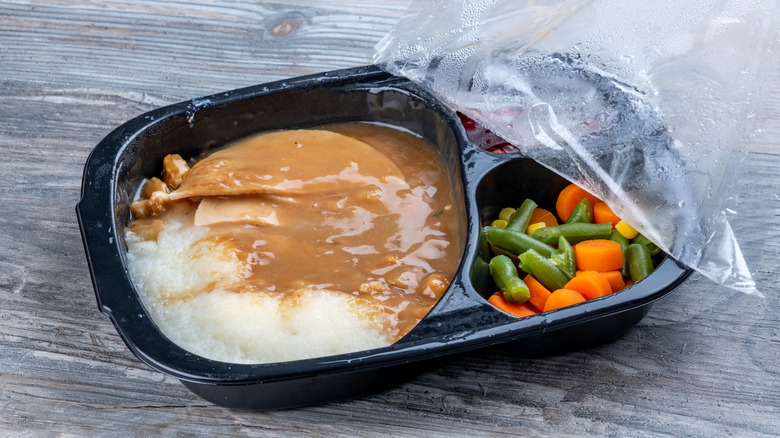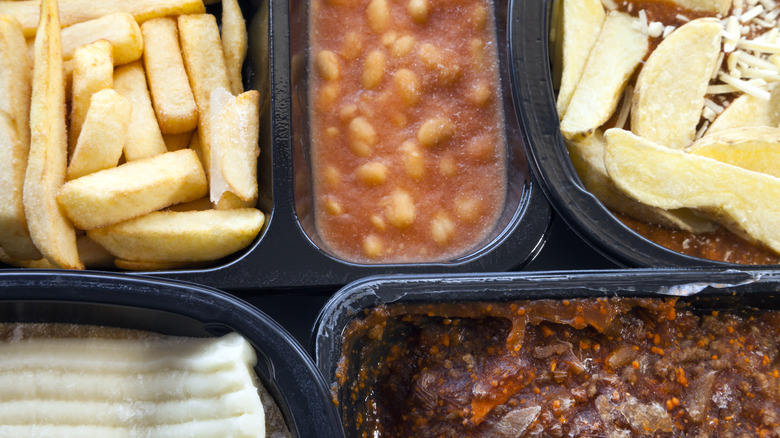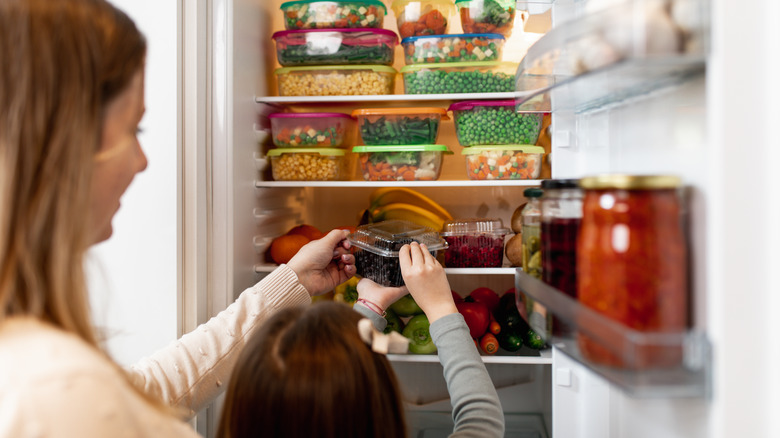DIY TV Dinners Are A Foolproof (And Fun) Meal Prep Technique
Even if you like to cook, coming up with an idea for dinner every single night can be pretty daunting. Cooking from scratch is great, but there's not always a lot of time to get food on the table, and it's a lot easier to heat up a frozen meal or two. Swanson knew this when it invented the TV dinner in 1954.
The problem is, frozen TV-style dinners from the grocery store often have a lot of extra ingredients that you don't need, like salt, fat, and sugar. Plus they can be pretty expensive, and the portions can be small. If you like the convenience of frozen dinners, the good news is that it's very easy to make a stack of your own TV-esque dinners to have around when the mood strikes or you just don't feel like cooking. All you need to do is pick freezer-friendly foods and do a little meal prep.
With a little advance planning, frozen dinners don't have to be a side note in your dinner strategy. You can make up a batch of wholesome meals with all the entrées and sides you actually like, and then have them ready later in the week or month when time is short. Plus, when you make your own frozen meals, you cut down on tossing out disposable packaging. You can save a little money too since frozen dinners at the store can cost a couple as much as $5 each.
What to cook
If you want to make some homemade frozen dinner setups, the first thing you need to do is decide what to cook. True TV dinners have a main entrée, a side, and a dessert, so plan to cook a couple of different freezer-friendly dishes all in one day for your meal prep. Choose a few mains, sides, and desserts so you can mix and match them in your containers.
When you're coming up with menu ideas, take your cues from some tried-and-true frozen dinners at the store for ideas, like meatloaf, lasagna, and chicken cutlets with sauce. Look for recipes for things that have a high moisture content, which helps them to freeze better. Anything that makes great leftovers will also make a great frozen dinner like chili, tikka masala, and rice casseroles.
If you're planning to use vegetables for sides, steer away from things that have delicate textures like celery and lettuce or fresh herbs that will get mushy from freezing. Corn, green beans, cauliflower, broccoli, and peas are all pretty durable choices. When you're preparing them for your TV dinner, undercook the vegetables slightly before freezing them so that they don't get mushy when you go to reheat them.
For desserts, look for recipes that can hold up to freezing and reheating and that won't lose their texture, like apple crisp, blueberry cobbler, and fudge brownies.
Pack and freeze
Once you have all of your food cooked for your TV dinner prep, make sure everything is cooled down properly before scooping it all into containers. Filling your freezer with a stack of containers of hot food will warm up the inside of your freezer and partially thaw other items, which can damage the texture of foods like ice cream.
If you want a classic TV dinner experience in aluminum trays, you can order pretty close replicas from Amazon or restaurant suppliers. Or you can pick up plastic and glass containers that have sectioned compartments, perfect for prepping and freezing a few weeks' worth of dinners. Look for containers that have air-tight lids so that you can prevent freezer burn. Also, if you plan to use the microwave to heat up your meals, skip the aluminum trays as they're not safe.
When everything's packed up and ready for the freezer, don't skip the last step: label and date your containers. Sometimes it's hard to see what's inside every container if the lid isn't clear, and it's extremely easy to lose track of time when food is frozen. Labeling and dating your containers will ensure you're never stuck with eating a mystery dinner, and you'll also know which meals to eat first so nothing goes to waste.


